Marketing Fundamentals Report - Promotion, IMC, and Channels
VerifiedAdded on 2022/10/09
|5
|713
|34
Report
AI Summary
This report examines key marketing concepts, beginning with the definition of promotion and its role in communicating product/service information to target consumers. It then defines Integrated Marketing Communications (IMC) and its importance in ensuring consistent messaging across various promotional tools like social media and print. The report explores the elements of the communication process, including message encoding, channel selection, and feedback. It also details marketing distribution channels, differentiating between direct and indirect channels, providing examples for clarity. The report includes references to academic sources to support its arguments.
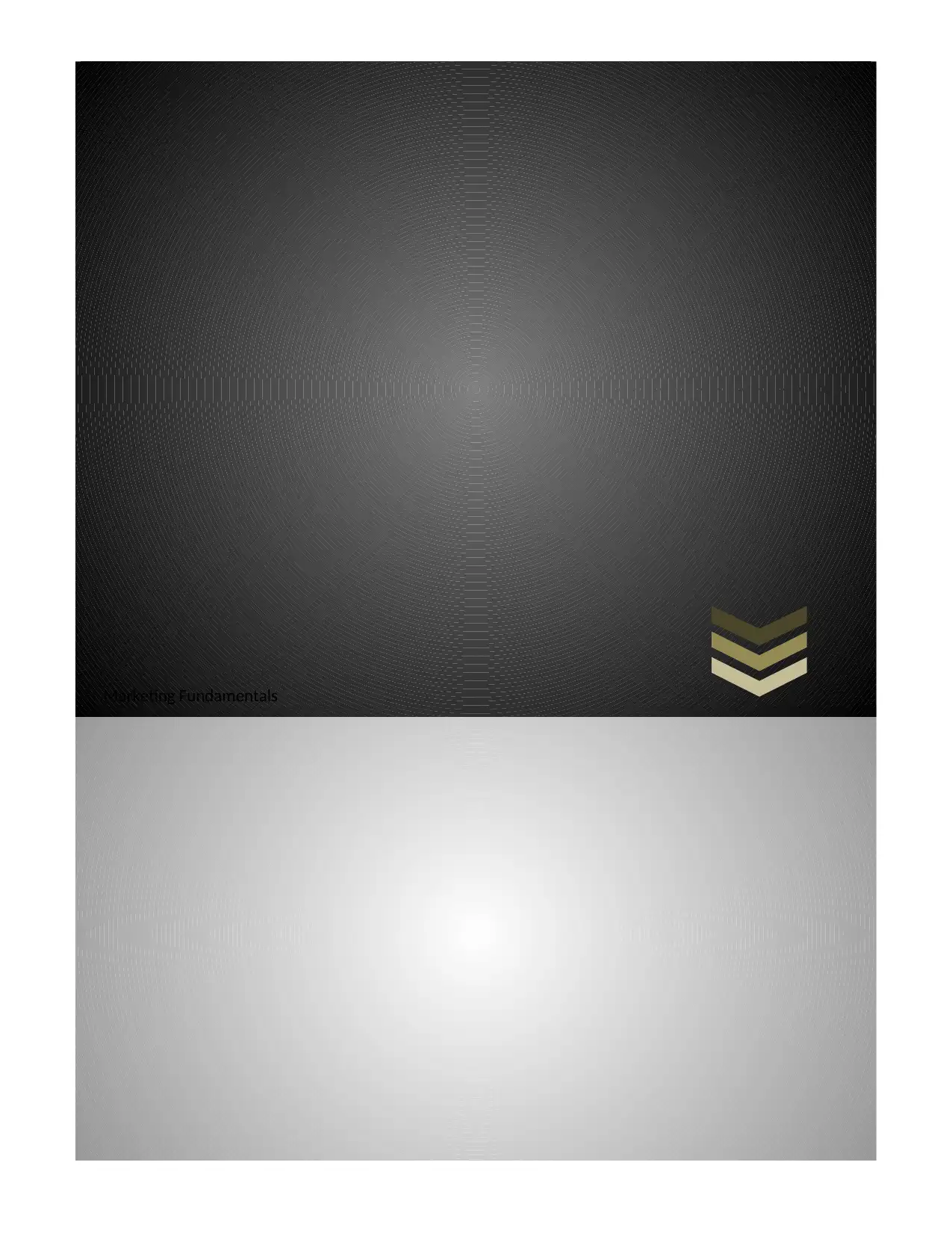
Marketing Fundamentals
Paraphrase This Document
Need a fresh take? Get an instant paraphrase of this document with our AI Paraphraser
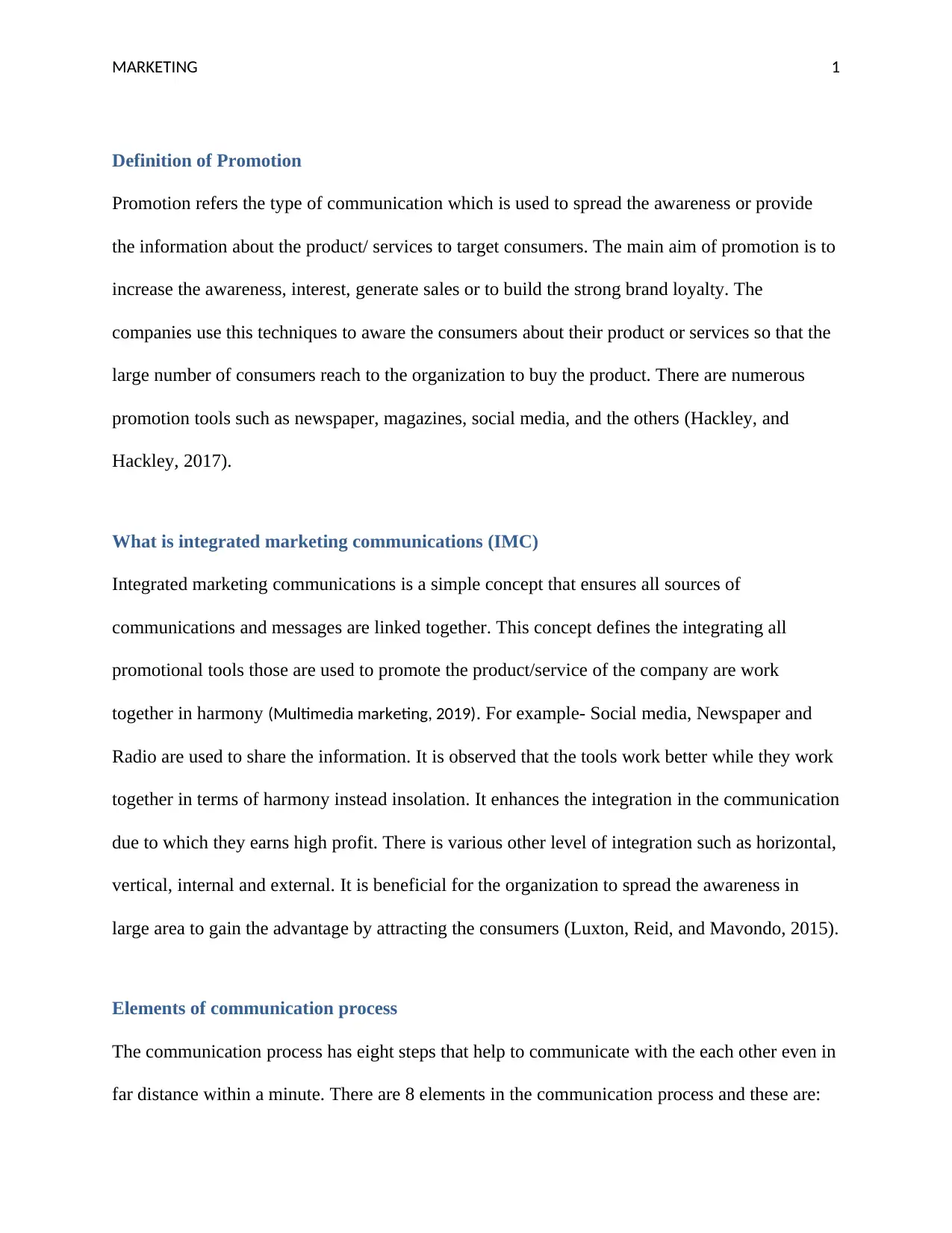
MARKETING 1
Definition of Promotion
Promotion refers the type of communication which is used to spread the awareness or provide
the information about the product/ services to target consumers. The main aim of promotion is to
increase the awareness, interest, generate sales or to build the strong brand loyalty. The
companies use this techniques to aware the consumers about their product or services so that the
large number of consumers reach to the organization to buy the product. There are numerous
promotion tools such as newspaper, magazines, social media, and the others (Hackley, and
Hackley, 2017).
What is integrated marketing communications (IMC)
Integrated marketing communications is a simple concept that ensures all sources of
communications and messages are linked together. This concept defines the integrating all
promotional tools those are used to promote the product/service of the company are work
together in harmony (Multimedia marketing, 2019). For example- Social media, Newspaper and
Radio are used to share the information. It is observed that the tools work better while they work
together in terms of harmony instead insolation. It enhances the integration in the communication
due to which they earns high profit. There is various other level of integration such as horizontal,
vertical, internal and external. It is beneficial for the organization to spread the awareness in
large area to gain the advantage by attracting the consumers (Luxton, Reid, and Mavondo, 2015).
Elements of communication process
The communication process has eight steps that help to communicate with the each other even in
far distance within a minute. There are 8 elements in the communication process and these are:
Definition of Promotion
Promotion refers the type of communication which is used to spread the awareness or provide
the information about the product/ services to target consumers. The main aim of promotion is to
increase the awareness, interest, generate sales or to build the strong brand loyalty. The
companies use this techniques to aware the consumers about their product or services so that the
large number of consumers reach to the organization to buy the product. There are numerous
promotion tools such as newspaper, magazines, social media, and the others (Hackley, and
Hackley, 2017).
What is integrated marketing communications (IMC)
Integrated marketing communications is a simple concept that ensures all sources of
communications and messages are linked together. This concept defines the integrating all
promotional tools those are used to promote the product/service of the company are work
together in harmony (Multimedia marketing, 2019). For example- Social media, Newspaper and
Radio are used to share the information. It is observed that the tools work better while they work
together in terms of harmony instead insolation. It enhances the integration in the communication
due to which they earns high profit. There is various other level of integration such as horizontal,
vertical, internal and external. It is beneficial for the organization to spread the awareness in
large area to gain the advantage by attracting the consumers (Luxton, Reid, and Mavondo, 2015).
Elements of communication process
The communication process has eight steps that help to communicate with the each other even in
far distance within a minute. There are 8 elements in the communication process and these are:
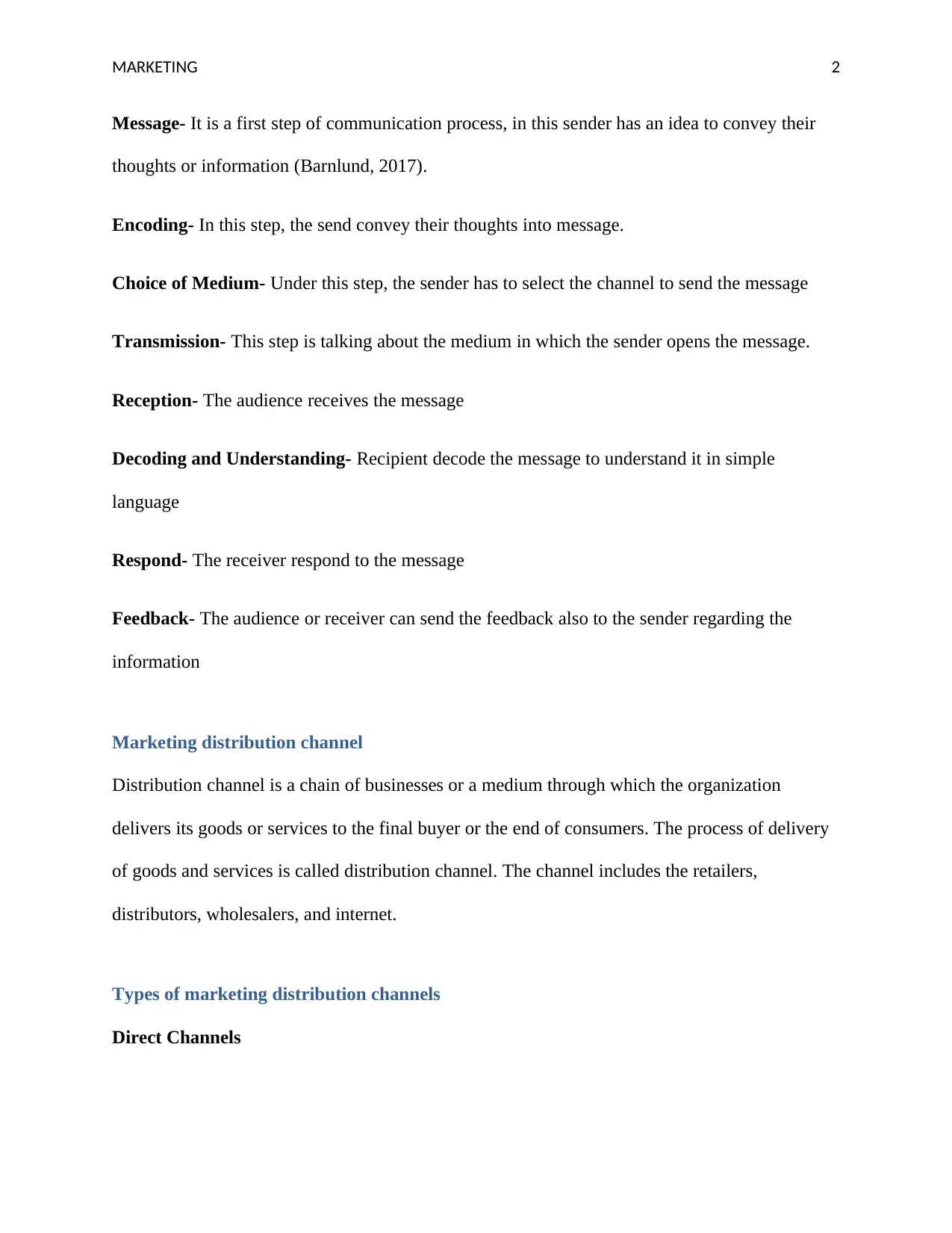
MARKETING 2
Message- It is a first step of communication process, in this sender has an idea to convey their
thoughts or information (Barnlund, 2017).
Encoding- In this step, the send convey their thoughts into message.
Choice of Medium- Under this step, the sender has to select the channel to send the message
Transmission- This step is talking about the medium in which the sender opens the message.
Reception- The audience receives the message
Decoding and Understanding- Recipient decode the message to understand it in simple
language
Respond- The receiver respond to the message
Feedback- The audience or receiver can send the feedback also to the sender regarding the
information
Marketing distribution channel
Distribution channel is a chain of businesses or a medium through which the organization
delivers its goods or services to the final buyer or the end of consumers. The process of delivery
of goods and services is called distribution channel. The channel includes the retailers,
distributors, wholesalers, and internet.
Types of marketing distribution channels
Direct Channels
Message- It is a first step of communication process, in this sender has an idea to convey their
thoughts or information (Barnlund, 2017).
Encoding- In this step, the send convey their thoughts into message.
Choice of Medium- Under this step, the sender has to select the channel to send the message
Transmission- This step is talking about the medium in which the sender opens the message.
Reception- The audience receives the message
Decoding and Understanding- Recipient decode the message to understand it in simple
language
Respond- The receiver respond to the message
Feedback- The audience or receiver can send the feedback also to the sender regarding the
information
Marketing distribution channel
Distribution channel is a chain of businesses or a medium through which the organization
delivers its goods or services to the final buyer or the end of consumers. The process of delivery
of goods and services is called distribution channel. The channel includes the retailers,
distributors, wholesalers, and internet.
Types of marketing distribution channels
Direct Channels
⊘ This is a preview!⊘
Do you want full access?
Subscribe today to unlock all pages.

Trusted by 1+ million students worldwide
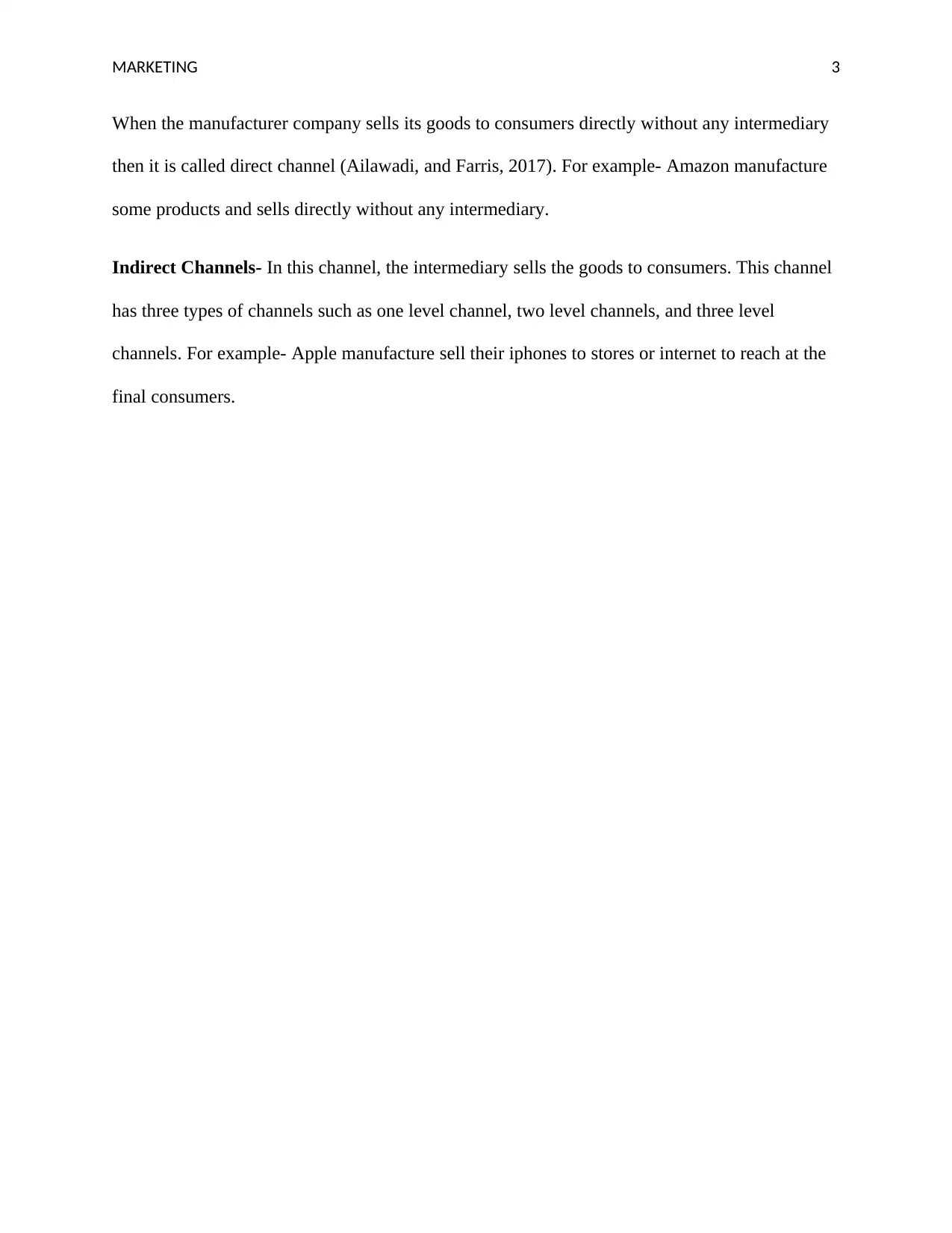
MARKETING 3
When the manufacturer company sells its goods to consumers directly without any intermediary
then it is called direct channel (Ailawadi, and Farris, 2017). For example- Amazon manufacture
some products and sells directly without any intermediary.
Indirect Channels- In this channel, the intermediary sells the goods to consumers. This channel
has three types of channels such as one level channel, two level channels, and three level
channels. For example- Apple manufacture sell their iphones to stores or internet to reach at the
final consumers.
When the manufacturer company sells its goods to consumers directly without any intermediary
then it is called direct channel (Ailawadi, and Farris, 2017). For example- Amazon manufacture
some products and sells directly without any intermediary.
Indirect Channels- In this channel, the intermediary sells the goods to consumers. This channel
has three types of channels such as one level channel, two level channels, and three level
channels. For example- Apple manufacture sell their iphones to stores or internet to reach at the
final consumers.
Paraphrase This Document
Need a fresh take? Get an instant paraphrase of this document with our AI Paraphraser
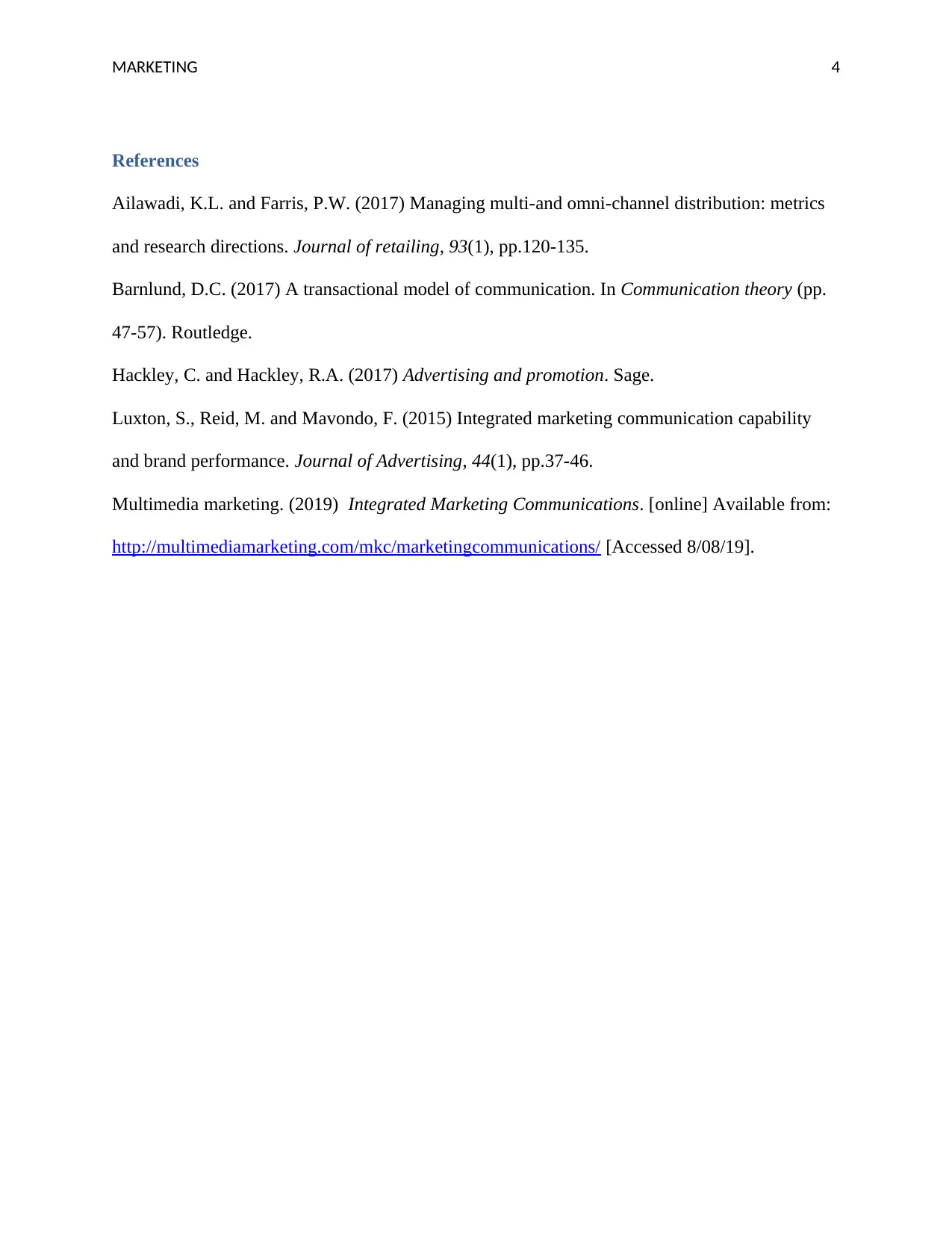
MARKETING 4
References
Ailawadi, K.L. and Farris, P.W. (2017) Managing multi-and omni-channel distribution: metrics
and research directions. Journal of retailing, 93(1), pp.120-135.
Barnlund, D.C. (2017) A transactional model of communication. In Communication theory (pp.
47-57). Routledge.
Hackley, C. and Hackley, R.A. (2017) Advertising and promotion. Sage.
Luxton, S., Reid, M. and Mavondo, F. (2015) Integrated marketing communication capability
and brand performance. Journal of Advertising, 44(1), pp.37-46.
Multimedia marketing. (2019) Integrated Marketing Communications. [online] Available from:
http://multimediamarketing.com/mkc/marketingcommunications/ [Accessed 8/08/19].
References
Ailawadi, K.L. and Farris, P.W. (2017) Managing multi-and omni-channel distribution: metrics
and research directions. Journal of retailing, 93(1), pp.120-135.
Barnlund, D.C. (2017) A transactional model of communication. In Communication theory (pp.
47-57). Routledge.
Hackley, C. and Hackley, R.A. (2017) Advertising and promotion. Sage.
Luxton, S., Reid, M. and Mavondo, F. (2015) Integrated marketing communication capability
and brand performance. Journal of Advertising, 44(1), pp.37-46.
Multimedia marketing. (2019) Integrated Marketing Communications. [online] Available from:
http://multimediamarketing.com/mkc/marketingcommunications/ [Accessed 8/08/19].
1 out of 5
Related Documents
Your All-in-One AI-Powered Toolkit for Academic Success.
+13062052269
info@desklib.com
Available 24*7 on WhatsApp / Email
![[object Object]](/_next/static/media/star-bottom.7253800d.svg)
Unlock your academic potential
Copyright © 2020–2025 A2Z Services. All Rights Reserved. Developed and managed by ZUCOL.




